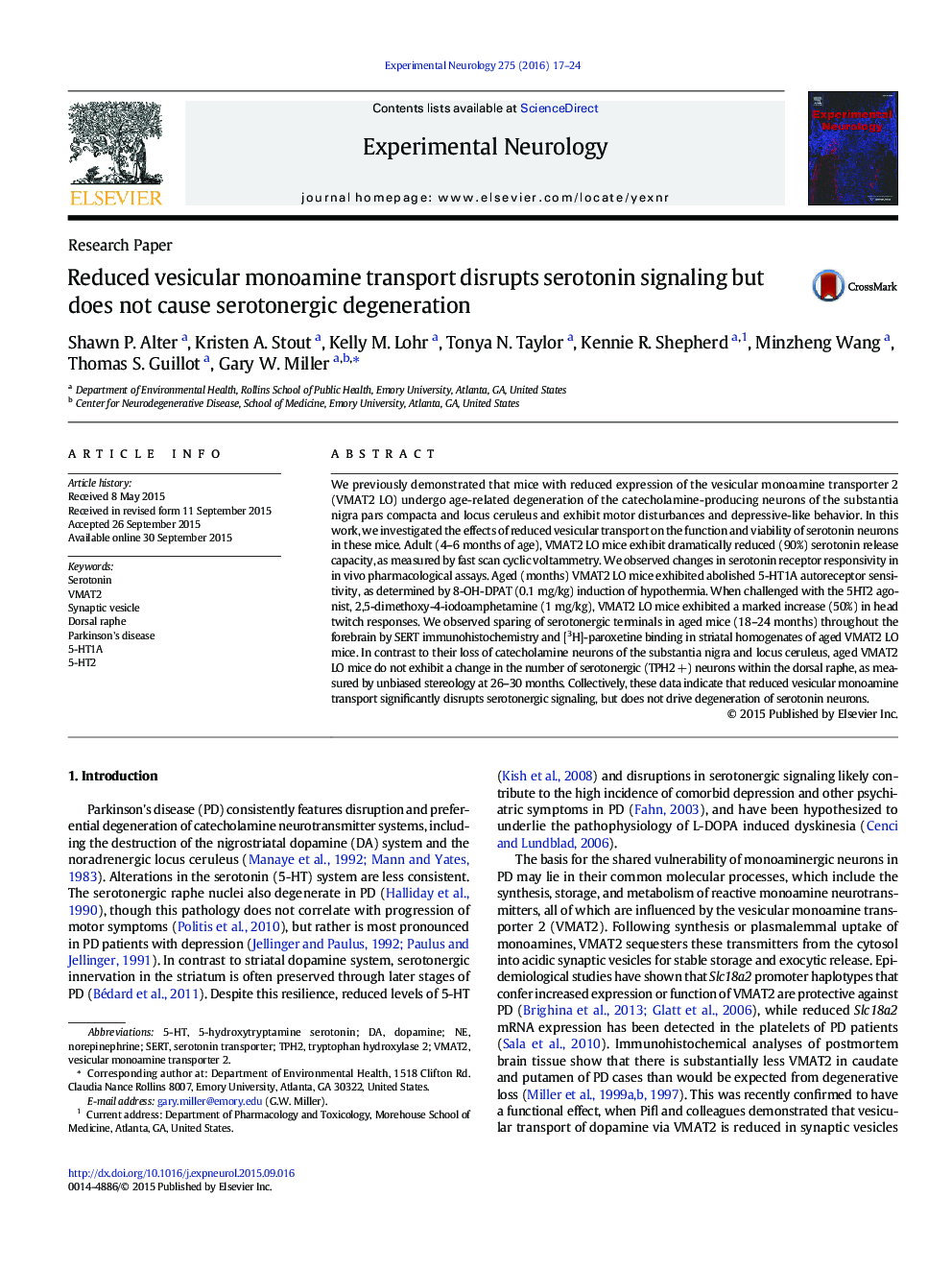| Article ID | Journal | Published Year | Pages | File Type |
|---|---|---|---|---|
| 3055349 | Experimental Neurology | 2016 | 8 Pages |
•The VMAT2 LO mouse model of Parkinson’s disease (VMAT2 LO) exhibits profound deficit in serotonin release capacity as measured by fast scan cyclic voltammetry.•VMAT2 LO mice have disrupted serotonergic signaling, including ablated 5-HT1A and increased 5-HT2 receptor sensitivity.•VMAT2 LO mice do not exhibit neurodegeneration of the serotonergic dorsal raphe, despite undergoing catecholaminergic degeneration.
We previously demonstrated that mice with reduced expression of the vesicular monoamine transporter 2 (VMAT2 LO) undergo age-related degeneration of the catecholamine-producing neurons of the substantia nigra pars compacta and locus ceruleus and exhibit motor disturbances and depressive-like behavior. In this work, we investigated the effects of reduced vesicular transport on the function and viability of serotonin neurons in these mice. Adult (4–6 months of age), VMAT2 LO mice exhibit dramatically reduced (90%) serotonin release capacity, as measured by fast scan cyclic voltammetry. We observed changes in serotonin receptor responsivity in in vivo pharmacological assays. Aged (months) VMAT2 LO mice exhibited abolished 5-HT1A autoreceptor sensitivity, as determined by 8-OH-DPAT (0.1 mg/kg) induction of hypothermia. When challenged with the 5HT2 agonist, 2,5-dimethoxy-4-iodoamphetamine (1 mg/kg), VMAT2 LO mice exhibited a marked increase (50%) in head twitch responses. We observed sparing of serotonergic terminals in aged mice (18–24 months) throughout the forebrain by SERT immunohistochemistry and [3H]-paroxetine binding in striatal homogenates of aged VMAT2 LO mice. In contrast to their loss of catecholamine neurons of the substantia nigra and locus ceruleus, aged VMAT2 LO mice do not exhibit a change in the number of serotonergic (TPH2 +) neurons within the dorsal raphe, as measured by unbiased stereology at 26–30 months. Collectively, these data indicate that reduced vesicular monoamine transport significantly disrupts serotonergic signaling, but does not drive degeneration of serotonin neurons.
